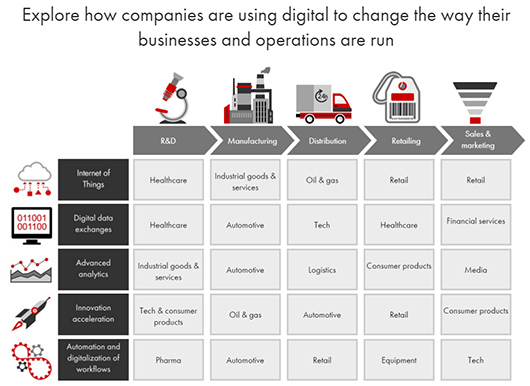 Like it or not, technology is taking over the world and transforming the way we carry out even the most basic of tasks. The availability of apps that allow us to do a range of every day things, such as control our home heating systems, record our favourite TV programmes remotely, or monitor our fitness, means that we’re becoming increasingly dependent on tech – and that’s no bad thing.
Like it or not, technology is taking over the world and transforming the way we carry out even the most basic of tasks. The availability of apps that allow us to do a range of every day things, such as control our home heating systems, record our favourite TV programmes remotely, or monitor our fitness, means that we’re becoming increasingly dependent on tech – and that’s no bad thing.
With a new year come new opportunities to develop existing technologies and create brand new ones. 2017 marks the tenth anniversary of Apple’s iPhone – a timely reminder of how revolutionary touchscreen was to the world a decade ago, whereas now we are increasingly reliant on voice-activated technologies. In fact, Gartner has predicted that ‘by 2020, the average person will have more conversations with bots than with their spouse’ – the popularity of Amazon’s Alexa chatbot, which topped most people’s 2016 Christmas lists, could contribute towards this prediction.
Advances in artificial intelligence mean that 2017 could be the year that robots take over. Autonomous car technology is set to be developed further this year, bringing us closer to self-driving cars – a scary thought for some! Not to be left out, the retail sector, already quite technical, is trialling delivery drones and self-driving robots to increase efficiency.

Graphic available here, where you can explore the interactive sections for greater detail.
Of course, there are fears that an increasing reliance on robotics to carry out jobs within a range of industries could mean job losses, but it’s also important to remember the positive impact that tech can have on the world. In the medical world, robotic prosthetics can be used to help amputees regain use of their limbs and advances in additive manufacturing mean that we’re not far off being able to use a 3D printer to create prosthetics and even organs perfectly matched to their intended user.
In lesser publicised industries, scientific facilities, for example, are fast advancing their ability to enhance their operations, increasing throughput and contributing to discoveries and research that could change the world. Not so long ago, scientists were reliant on pen and paper to record hundreds, if not thousands, of results. Now, labs are implementing Laboratory Information Management Systems (LIMS) that can not only capture huge volumes of data in seconds, but can analyse and find connections between samples – a crucial aspect of research.
The informatics landscape is rapidly evolving with technology because in actually understanding the information transmitted; advances can be made in technological capabilities. It’s defined as the science of information and computer information systems, and informatics studies structure, behaviour and interactions of natural and engineered computational systems.
There are developments within informatics that are helping to create its own concepts of communication, knowledge, interaction and information which can be used to form and understand relationships with computation, thought and language. By defining and developing new concepts, science is able to progress, and informatics plays a role in a wide range of disciplines – from mathematics and biology, to linguistics and psychology.
While informatics presents a whole host of opportunities, it also provides some challenges because there is seemingly no end to its capabilities or the expectations placed upon this area of study. It’s a common theme across many of the technological advances we’ve explored in this blog – they’re already having a big impact within the world and our daily lives, but just how far can we push the boundaries?
We support a number of organisations that are involved to some degree in scientific research – such as drug discovery and development, environmental research, academia and food and nutrition. The emerging technologies and platforms available to help research organisations manage, organise and evaluate their data are exploding and it can be difficult for specifiers to understand the features, benefits and drawbacks of the various options and their own requirements in order to make the best choice.
Communicating effectively to these specialist audiences by using whitepapers, case studies and technical articles is a specialist skill. We may not always understand every technical nuance in detail, but we successfully assist clients in distilling their platform or technology’s key benefits into clear and concise messages that their research audiences can understand and get excited about.
If you are looking for some advice or support with your technical or scientific content marketing plans for 2017, give us a call on +44 (0) 1477 539 539 or email [email protected].
By Georgia Smith, Account Manager at The Scott Partnership.





